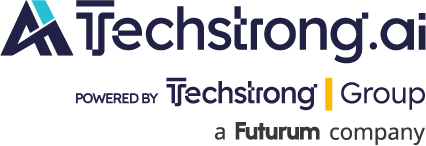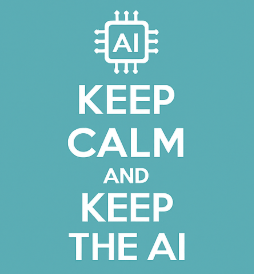
Let’s face it. If AI were a startup, the VCs would already be drafting the term sheet for a down round.
We’ve poured hundreds of billions into AI over the last 24 months. From enterprise copilots to synthetic content factories, there isn’t a Fortune 100 company without some sort of gen AI initiative underway. According to the New York Times and confirmed by McKinsey’s latest Seizing the Agentic AI Advantage report, 78% of companies have deployed generative AI. Impressive.
Until you read the next sentence: 80% of them report zero material impact on the bottom line.
Oof.
Now, if you’re looking for a reason to light your AI investments on fire and blame the intern, hold on. This isn’t the beginning of an AI winter. It’s just the inevitable chill after a hype-induced heatwave.
Welcome to the Trough of Disillusionment
As Gartner would say, AI is now going to head deep in the trough — and it’s exactly where it belongs. After all, this is the natural lifecycle of any transformative tech. Remember cloud? Containers? DevOps? The internet itself even? All hit this same low before maturing into enterprise staples.
The McKinsey report calls it the “Gen AI paradox”: widespread deployment, minimal impact. Most companies are using AI like a shiny bolt-on assistant rather than embedding it into their workflows. A chatbot here, a Copilot there. Nothing deeply integrated. Nothing game-changing. Yet.
Why? Because change at this scale requires rewiring how decisions are made, how work gets done, and — dare I say it — how your business thinks.
Vertical vs. Horizontal Use Cases: Follow the ROI
The report breaks it down neatly: Horizontal use cases (Copilots, chatbots) are everywhere but offer only incremental gains. Think “time saved writing emails.” Helpful, but not exactly a CFO’s dream.
Vertical use cases — where AI is integrated into supply chains, R&D workflows, or credit-risk modeling — are where the real juice is. The problem? They’re hard. They require reimagining core processes, not just bolting on another plugin.
This is where AI agents enter the picture. Think of them not as tools, but teammates. Systems that don’t just respond to prompts—they proactively plan, execute, escalate, and learn. The McKinsey data shows that when implemented correctly, AI agents can reduce workflow time by up to 90%. That’s not incremental. That’s transformational.
Tech is the Exception — And the Proof
Ironically, the tech industry is seeing ROI. AI in code generation, marketing automation and customer support is paying off. Devs using Copilot write code faster. Sales teams using AI qualify leads better. Support teams solve problems quicker.
It’s no coincidence. Tech folks are used to building, iterating and optimizing systems. They know how to integrate AI as an engine, not just a dashboard widget.
That’s your blueprint.
The Shimmy Take: Keep Your Bloomers Out of a Bunch
Here’s where I get opinionated (as usual): Take your bloomers down from around your neck and RELAX.
This is bigger than a quarterly earnings call. AI is not another SaaS feature. It’s a foundational shift in how work gets done. And big shifts take time.
We’re steering a tanker, not a Jet Ski. The returns are coming — but not on your impatient timeline. We’re not building spreadsheets here; we’re rewiring how companies operate.
So keep experimenting. Keep integrating. And more importantly — keep using AI.
Because if you unplug now, you won’t be saving money. You’ll be falling behind.
Don’t Miss the Forest
It’s easy to get lost in the headlines about failed pilots and stalled POCs. Don’t.
AI isn’t going away. It’s evolving. Every week, models improve. Agent frameworks get smarter. Tooling gets more intuitive. This is the calm before the productivity storm.
So here’s your mantra, printed large:


